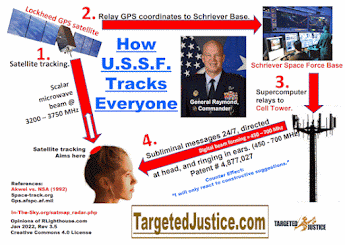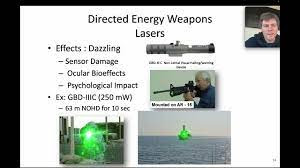Patent No. 5370126 Method and apparatus for three-dimensional mapping of evoked potentials
Patent No. 5370126
Method and apparatus for three-dimensional mapping of evoked potentials (Clifford, Jr., Dec 6, 1994)
Abstract
Coordinating stimuli generation and response signal processing provides for a real-time display of the stimuli response in a three-dimensional coordinate system and allows to select immediately the most appropriate evaluation programs for further processing of sensory information.
Notes:
Method
and apparatus for 3-dimensional mapping of evoked potentials. Filed March 1993,
granted December 1994. Refers to a continuous or ?movie' type displaying of
the evoked potentials. This particular patent as is, refers more to displaying
where in the brain that the evoked potentials start and the paths that they
take through the brain. Add in the aforementioned interpretation programs for
color, shape, motion, contrast, etc. for visual and tone, pitch, volume, etc.
for sound and basically someone would/could see and hear whatever someone they
would be attacking with the psychotronic weaponry sees and hears in a movie
or continuous display format. Might be able to use this patent in a detection
device, or this patent might also add in the misdiagnosis with proof of being
attacked.
FIELD
OF THE INVENTION
This invention relates to the representation of human and non-human electrophysiological
signals recorded non-invasively from the scalp, amplified, translated into digital
format, averaged, graphed and stored for statistical and diagnostic purposes
in real time.
The apparatus and method of the present invention can be used as a diagnostic
tool for stroke, hematoma, tissue damage to the brain, tumor (neurological),
visual impairment, auditory impairment, somatosensory impairment, coma, head
injury (open, closed), learning disability, schizophrenia, alcohol and drug
related illness, neurological development, mental retardative impairment, autism,
anoxia, associative inability to discriminate stimuli, Alzheimer's disease,
and mental illness.
BACKGROUND OF THE INVENTION
Many types of neural function diagnostic tools exist at present. The CAT, PET
(position emission test) and MRI (magnetic resonance imagery) all serve useful
purposes as tools for measuring locations of impairment known to exist through
gross symptomology. For example, MRI is used to access damage and reconstruct
the area associated with a trauma. CAT and PET scans both reconstruct affected
areas associated with a functional impairment. However, none of these devices
are capable of doing real-time processing and imaging of actual processing of
stimuli response information and related electrical phenomena. MRI, CAT and
PET scans are tools designed to investigate static phenomena by means of off-line
procedures. All three of these examination methods serve as different means
of trying to locate and identify areas of concern. However, none of these means
diagnoses the flow of activity or level of functional impairment through these
areas as defined by normal electrical activity.
An increasing awareness has grown in the medical field about the need to be
able to access not only static responses but also dynamic responses to actions
and stimuli. Evaluation of dynamic responses can only be achieved with the ability
to do real time diagnostic and real time imagery of electrophysiological events.
Also, the ability to do real time mapping of the brain's electrical response
will allow the medical field to observe dynamic events in both neurophysiological
and neuroanatomical realms in real time. This ability will allow both clinicians
and researchers to have a tool to examine and diagnose those phenomena which
occur between the onset of incident or trauma and that time when the patient
would normally have a more traditional examination of the insult. The present
invention will focus on the process underlying the infliction, as well as show
those areas affected by the trauma in a dynamic three-dimensional format.
SUMMARY OF THE INVENTION
The present invention utilizes the brain's natural electrical response to sensory
stimuli and by recording, maps those areas of the brain exhibiting electrical
activity.
Three pairs of electrodes, normal convex electrodes available from any medical
supply, are attached to the head of the subject under examination via tape or
by wearing a cap with electrodes embedded. The electrode pairs are as follows:
1) top of head to anterior throat
2) inion-nasion
3) left to right mastoid (behind ear).
A ground electrode is located at an inactive site of the upper part of the vertebral
column. The electrodes are connected to differential amplification devices as
disclosed below. Because the electrical charges of the brain are so small (on
the order of microvolts), amplification is needed. The three amplified analog
signals are converted to digital signals and averaged over a certain number
of successive digital values to eliminate erroneous values originated by noise
on the analog signal.
All steps defined above are linked to a timing signal which is also responsible
for generating stimuli to the subject. The responses are processed in a timed
relation to the stimuli and averaged as the brain responds to these stimuli.
Of special interest are the responses within certain time periods and time instances
after the occurrence of a stimulus of interest. These time periods and instances
and their references are:
25 to 60 milliseconds: P1-N1
180 to 250 milliseconds: N2
100 milliseconds: N100
200 milliseconds: P2
300 milliseconds: P300.
Stimuli can be presented via any sensory modality, at any rate, and any probability.
The probability of the presentation determines the amplitude of the brain's
response.
In an examination two stimuli sets may be used in a manner that the brain has
to respond to the two stimuli differently, one stimulus has a high probability
of occurrence, and the other stimulus is a rare occurring phenomena. The rare
response is the response of importance.
Three response signals are sensed and joined into a three dimensional cartesian
system by a mapping program. The assignments are (see FIG. 1):
nasion-inion=X,
left-right mastoid=Y, and
top of head to anterior throat=Z.
The assignment of the probes to the axes and the simultaneous sampling of the
three response signals at the same rate and time relative to the stimuli allows
to real-time map the electrical phenomena in a three dimensional space. Depending
upon the selected graphic display program the electrical phenomena can be displayed
in a perspective representation of the three dimensional space, or the three
components of the vector are displayed by projecting the vector onto the three
planes X-Y, Y-Z, and X-Z, and the three planes are inspected together or separately.
FIG. 3 is an illustration of a trajectory of 15 successively measured response
vectors in a perspective 3-D display. The gathered information lacks the necessary
distance from 0,0,0 axis information, however. In order to define the distance
between the response and the origin of the coordinate system, one needs to combine
the signal amplitudes in the following manner defined as Vector Amplitude:
where x, y and z are simply those signals measured at the same time, squared,
and square rooted, resulting in the length of the vector from the origin of
the vector. Interconnecting the ends of vectors of successive measurements provides
the trajectory of the successively measured vectors.
A simple transformation of the X-Y-Z axes signals through a Fast Fourier Transform
allows to graph the information in the frequency domain. The resultant graphic
of this power spectrum shows at what frequency the most power is being exhibited
by the signal. This information along with spatial orientation and distance,
plotted in three dimensions, gives information otherwise unobtainable by present
means.
Thus far, all spatial information is preserved for reconstruction as a map.
The Vector Amplitude (VA) measure provides information about how far from the
center of the head the observed event is occurring; the center of the head being
the center (0,0,0) of the coordinate system.
The processing of digital data is accomplished in microseconds due to the use
of digital signal processing (DSP) technology. This technology endows DSP devices
to be programmed with the procedure described above. Thus, the examination procedure
exists in software to be executed on a certain hardware configuration. The entire
process takes place on a computer board connected to an IBM compatible computer.
Because of the speed of the hardware, real time updating of the electrical phenomena
in map form is ensured and allows advancement from snapshot diagnostics to real
time "movie-like" mapping.
Therefore, by subjecting the brain to a probabilistic testing, averaging the
electrical signals composing the response, the medical field has a tool to watch
the brain as it processes information in dynamic form. In this procedure the
response vectors sweep through the brain as a pattern from one area of the brain
to another, both in serial and in parallel. If a trauma exists, the vectors
will disappear from an expected particular area, and reappear when they have
passed the inflicted area. The representation of the trauma is taken to be that
area of the map left blank. This allows a diagnosis of the anthropometric extent
of non-functions.
The length of a vector and its spatial orientation are also indicators of the
processing of cognitive information- Thus, the pivoting of a vector refers to
those areas of the brain used to process information not only at a neurophysiological
level, but also at a neuropsychological level of cognitive awareness. In other
terms, the tracking of cognitive phenomena are mapped as well. This arrangement
of software and hardware is suited for the diagnosis of neurological and psychological
defects such as stroke, Alzheimer's, coma, head injury, tumor, tissue damage,
retardation, information deficit syndrome, and space perception deficit. These
phenomena can be translated from analog-to-digital and mapped in a three dimensions
coordinate system for real-time display purposes. Because of DSP technology,
this mapping is qualitatively preserved as a movie, constantly changing as the
brain processes information.
Equivalent results can be achieved by filtering the amplified analog brain signals,
thereby eliminating all sudden changes in the amplitudes of the sensed signals.
Another application of the present invention, is its use as a monitor for the
level of anesthesia a patient is under during surgery.
The length of the vector is dependent on the level of awareness. Its sweep complete,
gives the path of the process. An incomplete sweep infers damage .
-----------------------------------------------
While
the present invention is disclosed in an arrangement using an IBM compatible
computer and an interface circuit to the analog sensors, it is considered to
be within the expected capabilities of an artisan skilled in this field to adapt
other computing means to fulfill the required operations by use of appropriate
interface means and software.





Comments